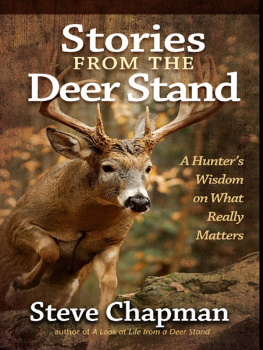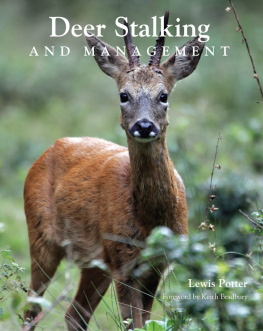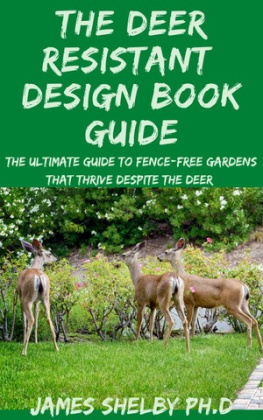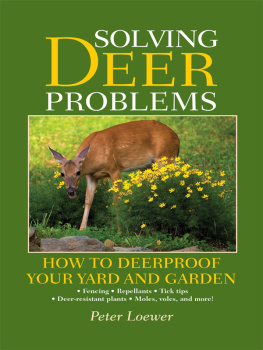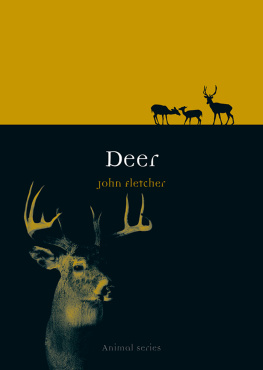Contents
Guide
Page List
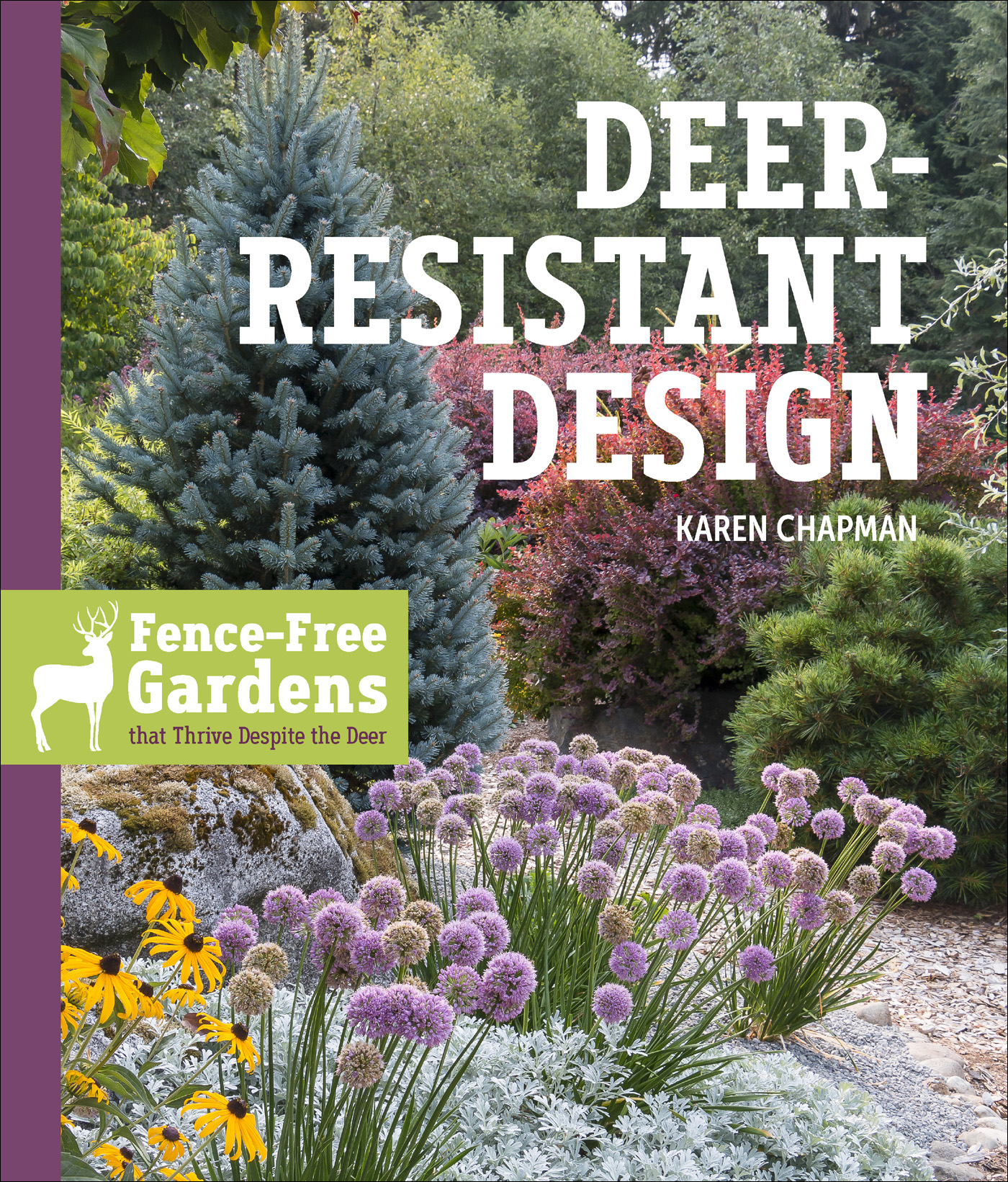

The authors garden.
Deer-Resistant Design
Karen Chapman
Fence-Free Gardens that Thrive Despite the Deer
Copyright 2019 by Karen Chapman. All rights reserved.
Illustrations copyright 2019 by Kaitlin Pond.
Photo credits appear on .
Published in 2019 by Timber Press, Inc.
The Haseltine Building
133 S.W. Second Avenue, Suite 450
Portland, Oregon 97204-3527
timberpress.com
Text and cover design by Mary Winkelman Velgos
eISBN: 978-1-60469-932-6
Catalog records for this book are available from the Library of Congress and the British Library.

To Anna Marjorie, the next generation.
Nana xx

Contents
Preface

Gardeners who share their space with deer are constantly frustrated as they try to emulate the glossy magazine images they see of beautiful landscapesand quickly realize that the majority of those tantalizing plant suggestions and combinations would read like a tasty menu to local herds. Its a problem I understand all too well and one that prompted me to write this book.
As I surveyed the stubby remains of my favorite coral bells (Heuchera Peach Flamb), I realized that despite a mere fifteen miles of separation, gardening in rural Duvall, Washington, was going to be very different from my previous gardening experiences in suburban Kirkland, where deer were not a problem. Even with shelves straining under the weight of excellent reference books and stacks of gardening magazines to scan for ideas, I encountered only an occasional article on designing a garden that deer would not devour, or an uninspiring list of suggested plants which, although deer-resistant, were seldom suitable for my sticky clay soil and wet winter climate. I needed ideas for expansive borders as well as more intimate vignettes, specimen trees and focal points, bold sweeps of color and intriguing textures, and as a designer, I wasnt willing to settle for anything less than fabulous.
If this sounds familiar, take heart. This book has been written to encourage and inspire homeowners just like you with stories and photographs of mature landscapes that have withstood the test of time and the taste-testing of deer. It showcases gardens across the United States that successfully co-exist with wildlife, gardens whose owners have not resorted to fences or pouring concrete in despair. Each chapter features the story of one garden and the tenacious gardeners who tend it, describing their personal design criteria, the challenges they face, and the strategies they employ as they refuse to be thwarted. While a Portland couple enjoys a live and let live approach, delighting in observing the large herds of deer and elk that share their hilltop farm, they minimize noticeable browsing by planting in large drifts and selecting primarily deer-resistant plants. An avid hosta collector in New York proves that a regular spraying regime using a homemade concoction really does keep the deer out of his lush garden. (I had to see this garden myself to believe it!) A busy young couple in Michigan designed a Blue Jeans Garden, a wonderfully casual space that rarely suffers damage from passing deer since they observed the routes the herd used when traversing their land and chose the toughest, most deer-resistant shrubs for those areas. The common thread through all thirteen gardens is the determination of the homeowners, who prove that working with a restricted plant palette doesnt mean compromising on beauty or vision.
Whether your preferred design style is informal or elegant, whether you need a waterwise design or one that will withstand brutal winters, even if you are determined to grow hundreds of hostas (aka caviar to deer), this book has tales to tell and knowledge to impart. All the homeowners featured in these pages also share their Top 10 deer-resistant plants, a welcome addition to a deer-challenged gardeners shopping list and guaranteed to put the fun back into nursery visits. Finally, a chapter on deer-resistant container gardens provides suggestions for making your patio pots every bit as colorful, captivating, and imaginative as those your city-living friends enjoy, with styles that run the gamut from contemporary to country, and exuberant to demure.
Landscape architects, designers, master gardeners, garden consultants, and nursery professionals will also benefit from the resources this book provides. In preparation for an appearance on PBSs Central Texas Gardener, I decided to visit a well-stocked nursery in Austin to familiarize myself with the local plant selection. I happened to overhear a customer asking a member of staff what he could plant that would be deer-resistant. The staff member smiled: Well, they dont usually eat sage. The gentleman explained that he already had thatwhat else could he plant? Oh, deer will eat anything if theyre hungry enough, she saidand walked away. I was shocked. Her response was certainly true, but it was hardly helpful. There were so many things she could have offered, and questions she should have asked, starting with how much sun or shade the area he wished to plant received. So I introduced myself and offered to help. We then spent a very enjoyable and productive time strolling around the nursery, selecting a collection of colorful shrubs for his partial-shade gardenones that looked fabulous togetherby considering foliage color, texture, and size as well as deer resistance. The customer left smiling, delighted to realize that he really could have a garden to be proud of, despite the deer. I cant recall the gentlemans name now; but sir, should you happen to read this, know that I have written this book for you and customers like you, as well as for that nursery professional, who clearly was in need of ideas herself.
Introduction
Strategies and Realities

A s the oft-repeated adage states, deer really will eat anything if they are hungry enough, but there is more to it than that, and understanding deer behavior can give us insights into their habits, thereby helping us stay one step ahead.

With no dogs at home, the deer became increasingly bold.
Deer are social learners, fawns accompanying their mothers to feeding grounds, often bypassing native forests to visit the same gardens from one year to the next. The availability of wild foods appears to have a major role in determining the level of browsing observed in the home landscape. Foraged acorns and mushrooms, two favorite, nutritious foods, are limited to certain seasons; and in the forest understory, plantings may be browsed so heavily that they are no longer within reach, even if a deer stands on its hind legs. Hostas and daylilies, on the other hand, are available for up to nine months of the year and can always be relied upon to be within snacking distance for even the youngest fawns.


